The Kenyan government considers an expansion of the Standard Gauge Railway (SGR) to Kisumu, Malaba, and Isiolo by June 2027.
The expansion will cost a staggering U$15,317,286,600 (or almost KShs2.1 trillion), according to Kenya’s State Department of Transport. This SGR project covers 2,746 kilometres from Kisumu to Isiolo via Malaba.
The proposal is a component of the Sh3.42 trillion Lamu Port South Sudan-Ethiopia Transport (Lapsset), which was the previous regime’s grand plan for SGR and is now Kenya’s most expensive project.
By encouraging movement within Kenya, South Sudan, and Ethiopia, Lapsset aims to open up northern Kenya as well as revamp the northern corridor. This ambitious scheme calls for the new railway to travel to Isiolo, Moyale, and the island of Lamu in addition to the border town of Malaba, which will be accessed via Kisumu, as initially envisioned.
The line will run from Mombasa County’s Mariakani through Lamu and Isiolo. The northeastern town of Moyale will have a link to the SGR from Isiolo. Moyale borders Ethiopia. The SGR will be extended by the government from Isiolo to Nairobi, connecting Ethiopia with northern Kenya and the country’s commercial hub.
Through Kisumu, the SGR is extended from Naivasha to Malaba. Around Sh1.8 trillion, of external financiers who the document does not identify, would provide the finance for these additional SGR kilometres, with the Kenyan government bearing the remaining costs.
An overview of the Kenya Standard Gauge Railway (Kenya SGR)
The Kenya Standard Gauge Railway will connect Kenya’s cities and link the East African country to the neighbouring nations. These nations include Uganda, South Sudan, the Democratic Republic of the Congo, Rwanda, and Burundi. The line might as well extend to Addis Ababa, in neighbouring Ethiopia to the north.
The Kenya SGR is divided into about seven segments. These are the 609 kilometres Mombasa–Nairobi section which is famously known as the Mombasa–Nairobi Standard Gauge Railway, the 120 kilometres Nairobi–Naivasha, and the 267 kilometres Naivasha–Kisumu sections.
The others are the 130 kilometres Kisumu–Malaba, the 1,500 kilometres Lamu–Lokichar-Nakodok, the 700 kilometres Nairobi–Moyale, and the 460 kilometres Naivasha–Lokichar sections.
Timeline
2009
The governments of Kenya and Uganda signed a memorandum of understanding (MoU) in October to construct a Standard Gauge Railway line from Mombasa to Kampala.
2013
A tripartite agreement was signed by the governments of Kenya, Uganda, and Rwanda in August to fast-track the development of the railway to their respective capital cities.
2014
Main construction works on Phase 1 (Mombasa-Nairobi SGR line) began in December with China Road and Bridge Corporation (CRBC) being the primary contractor. This particular phase cost US $3.8bn. China Exim Bank contributed around 90% of the financing while the remaining 10% was provided by the Kenyan Government.
The single-track standard gauge railway between Mombasa and Nairobi has a route length of around 480km and a total length of 609km. It runs through the counties of Mombasa, Kilifi, Kwale, Taita-Taveta, Makueni, Kajiado, Machakos, and Nairobi.
The Class 1 line runs parallel to the existing meter gauge railway and the Mombasa-Nairobi Road or A109 Highway for the most part. It deviates at certain points to attain the desired gradient and curvature.
The construction of the line involved long viaducts, deep cuttings, and high embankments to ensure safe operations across the steep incline and ragged terrain of the Miritini to Mazeras section. With 120km of the line traversing through Kenya’s Tsavo National Park, 14 wildlife channels were also built.
Terminal passenger stations are located at Mombasa and Nairobi, while intermediate stations are located at Mariakani, Voi, Mtito Andei, Sultan Hamud, Athi River, Email, Miasenyi, and Kibwezi.
The railway line is designed to carry 22 million tonnes a year of cargo or a projected 40% of Mombasa Port throughput by 2035. The freight terminals will be located at the Mombasa port and the Inland Container Depots at Embakasi in Nairobi.
Dec 2015
Standard Gauge Railway construction project in Kenya to be extended
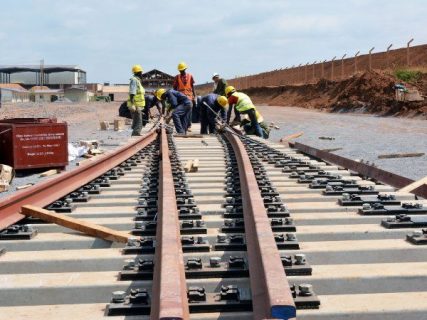
China has pledged to boost the extension of the Standard Gauge Railway construction project in Kenya from the capital Nairobi to the Rift Valley. Kenya will receive a $1.5 billion loan from China. Statehouse Spokesman Manoah Esipisu confirmed the news and said that Kenya will finance 15% of the project while the rest will be from China Eximbank.
“Kenya and China signed a financing package for the extension of SGR, China Eximbank will provide a US$1.5bn loan, 85 per cent of the financing, while Kenya will provide the balance,” he said.
The rail is projected to be extended to Naivasha and will offer access to an industrial park to be set up there so as to accommodate manufacturing firms wishing to use power from the nearby geothermal steam fields that are being developed.
The agreement was signed on the sidelines of the Forum for China-Africa Co-operation, which was recently held in Johannesburg.
The Standard Gauge Railway construction project in Kenya remains the single largest investment in the country’s economy in the last five decades.
Apart from the above deal, Kenya Railways and China Communications Construction Company Ltd have also signed a pact to carry out feasibility studies and initial designs for the second leg of the Mombasa-Nairobi line, which will stretch to Malaba on Kenya’s border with Uganda.
China Eximbank is one of three institutional banks in China chartered to implement the state policies in the industry, foreign trade, diplomacy, and economy, and provide policy financial support so as to promote the export of Chinese products and services. Established in 1994, the bank is subordinated to the State Council.
March 2016
The SGR construction project in Kenya finally taking shape
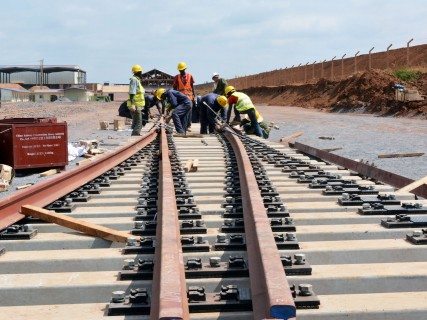
The Standard Gauge Railway SGR construction project in Kenya is finally taking shape. The construction project is an intergovernmental masterpiece linking neighbouring countries of Kenya, Uganda, Southern Sudan, and Rwanda.
This mega project is a reflection of the partner states’ commitment to providing an efficient and cost-effective railway network as well as a seamless transport alternative for both goods and passengers within the northern corridor.
The Standard Gauge Railway will no doubt boost the region’s efforts to create a borderless region for purposes of trade and social integration. Each of the partner countries is expected to finance the part of the railway under her territory with China’s Exim Bank offering to fund 90% of the first phase while the Kenyan government pays the remaining 10%
The first phase of the project covers a distance of 472km from Mombasa to Nairobi and a total track length of 609km at a total cost of Ksh327 billion inclusive of construction and the cost of locomotives. This phase is already in the advanced stage with the Kenyan government saying the project is way ahead of the 2018 set completion time.
The China Road and Bridge Corporation (CRBC) was contracted to build this state-of-the-art railway system that will handle both cargo and passengers with stations at Mombasa, Voi, and Nairobi.
The shape, design, and functionality of the SGR highly defy nature and topographical hurdles. With 98 bridges covering a total distance of 29km, the railway will be able to span valleys and crossroads and also cross over the existing meter railway.
In addition, the railway has nine Wildlife Animal Crossing Corridors going above 7 meters high and covering over 56 meters in distance in the Tsavo East and Tsavo West National parks
Upon completion of the first phase, Kenya’s arm of the multi-billion mega project is expected to extend to Malaba as Phase Two with a proposed branch to Naivasha. Uganda will pick up the project and is expected to go through Kampala, Kigali, and finally to Bujumbura.
With this project, trade will be boosted through the free and cheaper movement of people and goods. East Africa will seek to affirm its position and status on the African continent as a major economic block and trade partner of choice with the rest of the world
Jul 2016
Construction of Kenya’s Standard Gauge Railway faces a major hurdle
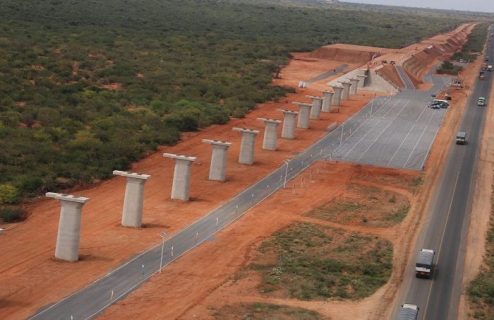
The construction of a section of the Standard Gauge Railway that passes through Nairobi National Park has been stopped following a decision of the National Environment Tribunal.
The orders to halt the construction come after the activists led by Okiyah Omtatah and Kenya Coalition for Wildlife Conservation successfully filled an application against National Environmental Management Authority (Nema), Kenya Wildlife Service, China Road and Bridge Corporation, Kenya Railways Corporation, the Attorney General and the ministries of Environment and Transport.
According to the letter dated September 19, the tribunal chairman JK Awuor ordered the stopping of the construction of the Standard gauge railway on the grounds that Nema had failed to conduct a feasibility study for the project, which is to be undertaken by China Roads and Bridge Corporation company.
The respondents have 21 days to respond to Omtatah’s appeal.”Take notice that the National Environment Tribunal has received an appeal from Okiya Omtatah and Kenya Coalition for Wildlife Conservation and Management against Nema’s failure to stop the project, which is currently underway without the benefit of an Environmental Impact Assessment license as mandated and required by law,” said Awuor in the letter. Omtatah argues that without an assessment there is no room to explore an alternative route.
According to the railway construction officials Phase 2A of the SGR project, the Nairobi-Naivasha section was to be constructed through the Nairobi National Park. This is expected to delay the construction of the railway line and perhaps see the railway project delayed on the delivery date.
Though in the past few months, the project has been facing a lot of challenges including the attack of the China Road and Bridge Corporation, and Kenya Railways Corporation under the ground that they didn’t give the locals jobs to carry out.
The multi-million project is expected to be completed by 2017 and is being funded by the government of Kenya.
Sep 2016
Kenya says construction of Standard Gauge Railway line to continue

Kenya now says that construction of the country’s mega standard gauge railway line will commence in the next two weeks despite being stopped by the environmental tribunal.
Kenya’s Transport and Infrastructure Cabinet Secretary James Macharia said that phase 2A of the Standard Gauge Railway project running from Nairobi to Naivasha was supposed to be launched early last week but that it was delayed by a petition filed by activists including the Kenya Coalition for Wildlife Conservation.
He added that they believe the project will commence on 19th October as they believe they will resolve environmental concerns.
“We know the activists have raised a genuine concern and we believe that we will resolve the matter in the next two weeks so that the project can go on as scheduled” he added
The cabinet secretary added that they are currently holding talks with the Kenya Wildlife Services and presented to them seven options for the route and they picked one, which we are going to proceed with.
He though added that they are looking into the proposals that they have already received to ensure that they get the best alternative routes that can be used by the project.
Macharia further stated that the protests against the SGR route through the National Park were premature since the construction route was yet to be picked.
“We love our environment and the contention that was raised was looking at ensuring that the railway line doesn’t affect our environment and hence we will ensure that the project considers that before it kicks off” he added. Macharia was speaking during the opening ceremony of the regional office of the China-Africa Development Fund.
Oct 2016
Construction of Phase 2A (Nairobi-Naivasha SGR line) kicked off in October. The 120km modern railway line whose construction contract was awarded to China Communications Construction Company (CCC) would cost US $1.5bn.
Dec 2016
Chinese loans on Kenya’s SGR project to hit U$10b
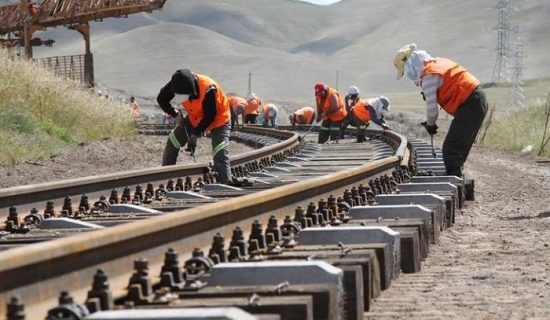
The Chinese loans for Kenya’s SGR project are now set to hit US$10b After the Exim Bank of China expressed interest in funding the third phase of the project at a cost of US$4.9 billion to extend the railway from Kisumu to Malaba thus linking Kenya and Uganda.
Kenyan opposition side however has always stood against the move by the government to continue borrowing funds as the country will be having a lot of debts to pay instead. But the railway project is expected to ease transport as well as strengthen cooperation among East African Community member states and promote trade and the region’s economic development.
Though the bank is already financing the first leg of the railway from Mombasa to Nairobi at a cost of Sh380 billion with completed work standing at over 90 per cent currently.
The second phase between Nairobi and Naivasha, a stretch of 120 kilometres, will cost Sh150 billion. The higher cost between Nairobi and Naivasha has been attributed to the harsh terrain.
As a result, the cost of tunnels will take up 23 per cent of the total cost estimated at US$1.82 billion. The tunnels will cut through Rift Valley escarpments, making design work more expensive.
This is one of the biggest projects being carried out by the jubilee regime under the leadership of Uhuru Kenyatta.
SGR Operator to Employ over 3,000 Kenyans
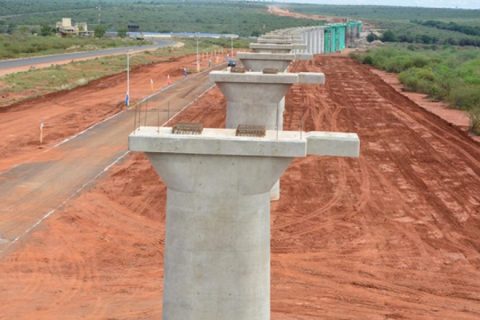
A Chinese-based firm has pledged to employ more than 3000 Kenyans on the standard gauge railway commonly known as SGR. Already, Kenyan President Uhuru Kenyatta has launched the project that has been hailed as a major milestone in the country’s history.
The company which will operate the ongoing construction of Kenya’s first standard gauge said that they will only seek locals once they start their operation in January 2018.
The firm said that those who will mainly benefit include drivers, technicians, and station operators, offering employment to those laid off by Kenya Railways when it transferred rail operation to Rift Valley Railway (RVR).

According to the Transport principal secretary Irungu Nyakera, the operator will advertise the jobs in 2017 and offer contracts ahead of their operations in 2018.
He added that the agreement comes after the government demanded that 80% of the jobs to be offered to the locals in a mid to ensure that they curb the rising joblessness in Kenya.
Kenya gave China another sweetheart deal by contracting a Chinese company to operate the business on the SGR without public bidding.
RVR, which operates the Kenya-Uganda railway, is expected to face competition from the new railway being built with Chinese financing from Mombasa to the Ugandan border.
“They directed that the contractors for the Mombasa-Kampala section undertake operations in the interim as the two partner states build their local capacities,” read an agreement signed at the summit of East African Community heads of state.
Also read: Kenya seeks additional US$ 4bn from China for SGR project
Kenya Railways expects the tracks for the Mombasa to Nairobi line to be ready next year and the rail opened for commercial traffic in January 2018. RVR, which operates the ageing narrow-gauge track, will be the biggest loser.
The Railway will give relief to the transport industry more so the bulky transportation hence helping ease congestion on Kenyan roads.
2017
Phase 1 (Mombasa-Nairobi SGR line) was opened.
Feb 2017
Inspection of Kenya’s SGR locomotives kicks off
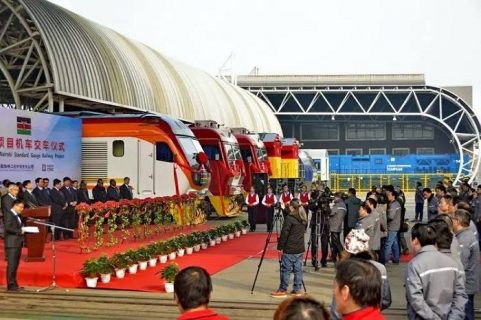
The Kenyan government has begun the long-awaited exercise of inspecting and commissioning SGR locomotives for the Kenya rail project. According to officials, this move is aimed at ensuring that the completion of the first phase of Kenya’s SGR project is right on time as planned.
Speaking to journalists at State House, Spokesperson Manoah Esipisu said the first journey from Mombasa to Nairobi will start in June. “Testing, commissioning, and inspection of these locomotives have already begun. Kenya remains on track to see the first SGR journey to Nairobi from Mombasa on June 1, 2017,” Mr Esipisu said.
Mr. Esipisu added that the locomotives that have already been imported to the country are world-class and the passenger coaches will be delivered later this month. “This is one of the projects that we as the Jubilee government are happy about and we are sure that it will be completed right on time” he added.
The official also added that the eight Eight heavy haul freight locomotives, passenger locomotives as well as two shunting locomotives have been delivered. “We expect to have enough SGR locomotives that are for transportation of goods and others for passages in the next few months” he added.
President Uhuru Kenyatta will commission the Sh372 billion project after its completion.
He further said Kenya Railways has procured 56 locomotives, 40 passenger coaches, and 1,620 wagons.
Last month, Transport Cabinet Secretary James Macharia said that the second batch of six locomotives is expected to arrive this month and the last batch of 44 by May. Mr Macharia said the railway will decongest the port and boost cargo transportation to Nairobi.
The railway will connect Kenya, Uganda, Rwanda, and South Sudan.
May 2017
Kenya seeks an additional US$ 4bn from China for the SGR project
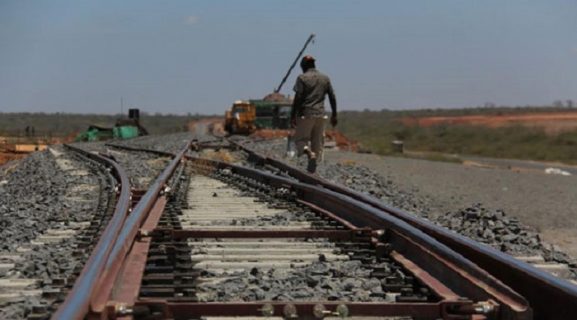
The Kenyan government now seeks an additional US$ 4bn as a loan from China that will help finance the extension of the standard gauge railway (SGR) from Naivasha to Kisumu.
The loan which is expected to be provided by China Exim Bank will finance the construction of the third phase of the SGR, a 270km line between Naivasha and Kisumu.
State House Spokesman Mr Manoah Esipisu confirmed the news and told reporters in Beijing, where the President has been attending a trade conference that the funding will undergo the normal procedure of approval and Premier Li has promised to give it adequate consideration and urgency it deserves.
“The funding request will undergo the normal procedure of approval and Premier Li has promised to give it the adequate consideration and urgency it deserves,” said Mr. Esipisu.
The first phase cost a whopping US$ 3.1bn that was between Mombasa and Nairobi.
The additional cost reveals that each kilometre of the upcoming third phase of the railway will cost US$ 13m compared to with reference to US$ 15m for the Nairobi-Naivasha phase.
The SGR line is for passengers and cargo transportation between Mombasa, the largest port in East Africa, and Nairobi, the capital city of Kenya. The new railway line constitutes the first phase of the SGR project that aims to connect Kenya, Uganda, Rwanda, and South Sudan.
The Mombasa-Nairobi SGR is the biggest infrastructure project in Kenya since independence. It will shorten the passenger travel time from Mombasa to Nairobi from more than ten hours to a little more than four hours. Freight trains will complete the journey in less than eight hours.
Construction of the 609 km-long lines began in October 2013 and is scheduled to be completed by December 2017.
Aug 2018
Kenya to sign US $3.8 bn SGR phase II deal
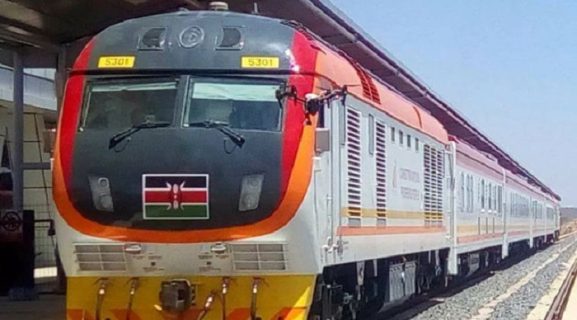
Kenya’s government has scheduled to sign the US $3.8 bn contract for the second phase construction of the Standard Gauge Railway (SGR) this September.
This is according to James Macharia, Transport and Infrastructure Cabinet Secretary, who said the deal will be concluded during this year’s Forum on China-Africa Corporation (FOCAC) that will be held from September 1-5 in China.
“We shall be travelling to China on the first week of September for the FOCAC summit and we shall sign the US $3.8 bn contract for the second phase of the SGR from Naivasha to Kisumu,” said James Macharia.
SGR phase II funding
The CS describes the phase II project as a great opportunity for investors to build industries and houses along the corridor, beginning from Mombasa to Kisumu. He added that the signing of the deal will put the cost of the complete project at US $8bn. However, it is not yet known who the financier of phase II of the SGR project is.
According to CS Macharia, the Mombasa-Nairobi phase will cost US $3.3bn, the extension to Naivasha to cost US $1.5bn and the final phase will cost US $3.8bn. Phase 2B of the project will start at the planned Naivasha Industrial Park where Phase 2A ends.
Inland Port
Meanwhile, the government is also planning to put up a modern inland port that will pass through Narok, Bomet, and Kericho counties and terminate in Kisumu. Additionally, the railway line will have 25 stations, a county station in Kisumu, six intermediate stations, and 18 crossing stations.
According to the project contractor, China Communications Construction Company (CCCC), the laying of tracks and rail sleepers is being carried out from Narok toward Nairobi. The 120 km Nairobi-Naivasha line is the first of the three segments that make up Phase II of the SGR project which ends in Malaba town located at the Kenya-Uganda border.
Stations construction
“Construction of the stations has been ongoing in Ongata Rongai, Ngong, and Suswa towns. We are on course to complete the 4.5 km Ngong tunnel in August, the first and longest railway tunnel in the country,” said Steve Zhao, the CCCC Kenya SGR project spokesman.
6% of the railway line will consist of three tunnels measuring 7.147 km and it will have 27 bridges measuring 17.3 km, accounting for 14.4% of the total project length.
Sep 2018
China to fund half the cost of Kenya’s SGR extension to Kisumu
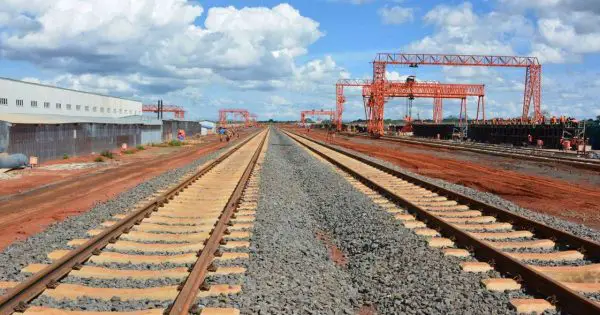
Kenya seeks for China to fund half the cost of the Standard Gauge Railway(SGR) extending to Kisumu with the aim of slowing down the country’s debt.
During a bilateral meeting with China’s Xi Jinping, President Uhuru Kenyatta indicated that the cost of the 270km extension should be split into a loan and a grant to relieve the country. The meeting, the third on Chinese soil, was expected to secure financing deals for infrastructure.
Decrease in debt
“The Naivasha-Kisumu phase of the SGR will cost US $3.8bn. And owing to its regional significance, I would request that 50% of its cost be provided as part of grant financing,” said President Kenyatta.
The Standard Gauge Railway, whose first phase from Mombasa to Nairobi was completed last year at a cost of US $3.2bn, is supposed to pass through Kenya, Uganda, Rwanda, and the DRC. It is also part of China’s long-term vision to access resources in the interior of Africa.
Upon agreement, the whole Mombasa-Nairobi-Kisumu railway line when complete will make Kenya have US $7bn of Chinese debt which is a decrease from the initial US $43bn.
“The SGR sits very well on the Belt and Road Initiative. It commences the envisaged land bridge between the Indian and Atlantic Oceans, opening up the interior for trade and investment across seven countries, and opening China who are our largest multilateral lender to Kenya, accounting for about half of Kenya’s multilateral debt to Central Africa, and further on, beyond the Atlantic Ocean,” said the President.
Jul 2019
China to fund construction of Kenya’s Naivasha -Kisumu SGR Project
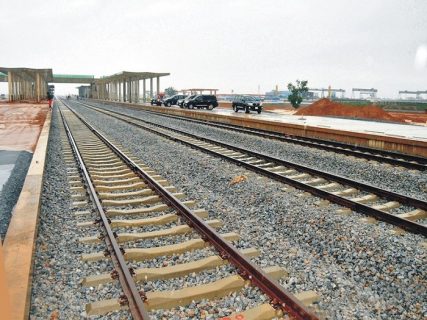
The government of Kenya has announced that the Chinese government has agreed to fund the construction of the Naivasha-Kisumu Standard Gauge Railway (SGR) line.
Speaking at the Forum for China Africa Cooperation (Focac) in Beijing, Transport CS James Macharia Chinese Ministry of Commerce had approved the required funds, which are now with Exim Bank.
“SGR is a regional project and Kenya being its entry gate cannot develop it on its own because it will not be viable in the fact that 30% of cargo in Mombasa is in transit, therefore, there’s a need to harmonize SGR with what other countries are doing.
The funds are now with Exim Bank, which is looking into financial dynamics of lending according to the structure of each country,” said Mr Macharia.
Naivasha -Kisumu standard gauge railway
The CS also said that Phase 2A (Nairobi to Naivasha) is 98% complete and will be operational in September, paving the way for Phase 2B Naivasha-Kisumu project projected to take 4 years to be completed.
CS Macharia explained that the government would rehabilitate the Naivasha to Malaba meter gauge railway segment, even as it pursues funding for the remaining section of the SGR line.
“Since by September we will start receiving goods at Naivasha from Mombasa and Naivasha-Kisumu is not yet ready — even if we start today— we had to rehabilitate the old railway to Malaba so that while it will take nine hours for goods to arrive in Naivasha, it should take the same time for the goods to reach Uganda, which is our biggest client. Without modernizing it, it might take two days,” said the CS.
Oct 2019
Kenya launches second phase SGR line from Nairobi to Naivasha
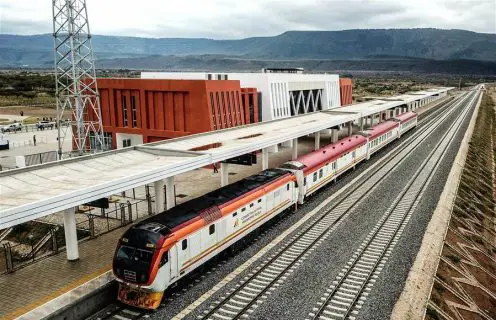 Kenya has officially launched the second phase Standard Gauge Railway (SGR) line, which links Nairobi with the Rift Valley town of Naivasha. Speaking at the launch President Uhuru Kenyatta said that the railway line will spur development in all the areas that it passes through.
Kenya has officially launched the second phase Standard Gauge Railway (SGR) line, which links Nairobi with the Rift Valley town of Naivasha. Speaking at the launch President Uhuru Kenyatta said that the railway line will spur development in all the areas that it passes through.
He further urged citizens to shun those propagating lies about the project. “The completion of the Nairobi Suswa section of the SGR project is expected to revolutionize the development of the surrounding areas,” Kenyatta said.
The new track
The new track is 120km long and has 12 stations. Passengers can ride the trains, but the railway is mainly for cargo. The track will eventually lead to an inland container depot, from where containers will be distributed to Uganda and Rwanda, and to South Sudan.
The cost of US $1.5bn for construction of the second phase comes up on top of the US $3.2bn spent for the first stretch from Mombasa to Nairobi. According to President Kenyatta, this money will be earned back by the economic development spurred on by the railway.
The loans were provided by Chinese banks. Wu Peng, who is the Chinese ambassador to Kenya, said that China is not only lending but also investing in Kenya with the coming of the railway.
“We encourage Chinese enterprises to invest in the Naivasha ICD and the special economic zones,” Peng said.
The railway currently generates US $75m per year from passengers and cargo. At that pace, the loan will be paid back in 60 years. Kenya hopes to see revenues rise once the railway is connected to the neighbouring countries. The railway is the country’s biggest infrastructure project since independence.
2020
In August, demand for the Standard Gauge Railway (SGR) freight services from Naivasha and Nairobi to Mombasa increased, according to figures from the operators. Africa Star Railway Operation Company Limited (Afristar) and Kenya Railway Corporation (KRC) said that the demand is fuelled by increased efficiency and reduced freight rate.
In July 168 trains, railed 1, 715 Twenty Equivalent Units TEUs from the two ICDs to the port of Mombasa, according to data from the KRC and Afristar. In mid-December, Four Nairobi businessmen failed to stop the ongoing development of an inland container depot for the Standard Gauge Railway (SGR) in Syokimau Embakasi.
John Mugo Njeru, Byron Kanyu, John Muswanyi, and Victor Muiru wanted the court to issue an injunction on grounds that they are the registered owners of the 15-acre land where the dry port is being developed to be used by the new SGR at Syokimau. They said the land was part of a 37-acre land that was allocated to them in July 1998.
They processed the title for the land and registered it in their names on February 4, 2005. In their application, the businessmen contended that the company has started erecting structures on the land and that unless an injunction is issued in their favor, they will suffer loss which may not be compensatable in damages.
But Justice Erick Obaga dismissed their application upon finding that the developing company was already in possession based on a lease from the Kenya Railways Corporation. He said evidence tabled in court revealed that the land had been surveyed in 1969 and in 1971, and was the subject of compulsory acquisition by the government.
Jan 2022
Kenya: China to Renew Funding For Naivasha-Kisumu Standard Gauge Railway (SGR)
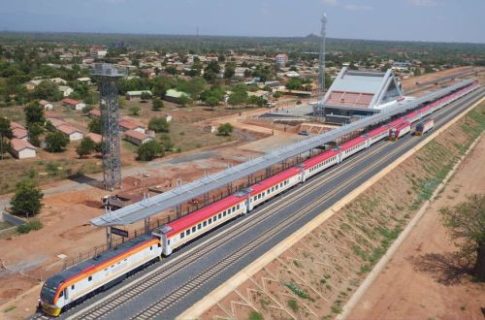 The government of China represented by the country’s Foreign Minister, Mr. Wang Yi, has hinted that it may renew funding of Phase 2B of Kenya’s Standard Gauge Railway (SGR), or rather the Naivasha-Kisumu Standard Gauge Railway.
The government of China represented by the country’s Foreign Minister, Mr. Wang Yi, has hinted that it may renew funding of Phase 2B of Kenya’s Standard Gauge Railway (SGR), or rather the Naivasha-Kisumu Standard Gauge Railway.
Mr. Yi made the revelation during a tour of China-funded projects in Mombasa as part of his three-nation tour of Eritrea, Kenya, and Comoros. He said that the SGR project has been prioritized for completion as an element of a master plan for transport infrastructure in the Horn of Africa.
Under the master plan, Kenya’s SGR will be extended from Naivasha to Uganda, Rwanda, South Sudan, and eventually to the Democratic Republic of Congo, while the Addis-Ababa-Djibouti railway will be extended to five other neighbouring countries including Eritrea.
This, according to the Chinese Foreign Minister is all in a bid to help the region accelerate the construction of industrial and economic belts that will subsequently create more jobs for the region.
Cancellation of the previous request to China by Kenya to fund the Naivasha-Kisumu Standard Gauge Railway
As a recap, Kenya borrowed approximately US$ 3bn from China to build the 472km railway from Mombasa to Nairobi and US$ 1.5bn for the 120km Nairobi-Naivasha line. However, in September 2018 when the East African country approached the Asian counterpart for the third round of funding for the Naivasha-Kisumu SGR, the latter declined to approve the loan.
Reportedly, Chinese Premier Xi Jinping asked the parties involved to defer making the approval until the East African country undertook a commercial viability study on the entire Mombasa-Kisumu railway. It later turned out that the Asian country declined to make the approval as part of its policy changes that sought to manage debt default risks by countries or projects.
In early March 2022, Kenya Railways Corporation (KRC) announced that it has begun the process of taking over the operations of the Standard Gauge Railway (SGR) from the Chinese operator Afristar. According to Kenya Railways Chairman Omudho Awitta, the corporation has already assumed the ticketing, security, and fuelling functions of the Standard Gauge Railways (SGR)
“We have negotiated with the contractor so that we take over the running of the standard gauge railway. The first phase has started, and we have taken over the security, ticketing, and fueling of the trains. These phases will go on smoothly up to May 2022 when we take overall operations,” said Awitta.
He further added that instead of the 10 years, they are taking over in five years. “We are prepared for it and we are ready to go,” said the chairman. In mid-June, the Okoa Mombasa lobby alongside The Institute for Social Accountability (TISA) filed a petition with the High Court in Mombasa, demanding the disclosure of SGR contracts.
The petition further seeks to obtain all agreements and studies related to the construction and operation of the Standard Gauge Railway (SGR). The petitioners argue the Constitution prohibits confidential contracts for public infrastructure projects as they further lament the lack of public participation in the project’s financing. The petition comes amid the project’s perceived negative impact on the Coast region’s economy.
December 14, 2022
Government to revert back to the initial Kenya Standard Gauge Railway plan
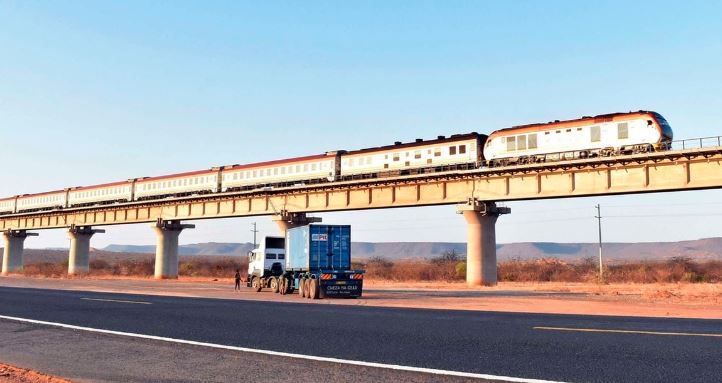
The government of Kenya through the Transport Cabinet Secretary Kipchumba Murkomen has revealed that it is keen on reverting back to the initial SGR plans, especially on the section that links the country with her neighbour to the West, Uganda.
There were uncertainties about whether the SGR line could extend to the Malaba border where the Ugandan SGR begins. The current government had termed this section of the railway a white elephant and claimed that it leads to the middle of nowhere.
Plans to revert to the initial plans were announced barely a day after the Ugandan president affirmed his government’s commitment to construct the Kampala-Malaba SGR line. Murkomen, also revealed that the Kenyan government was considering establishing a linkage between Nakuru and Eldoret. The CS explained that Nakuru would be given the first priority.
He said “We are working on modalities to release funds for the Nakuru section which we hope to begin construction in the next few months. Later, we will construct another line to Eldoret and then Kisumu, before it goes to Uganda.”
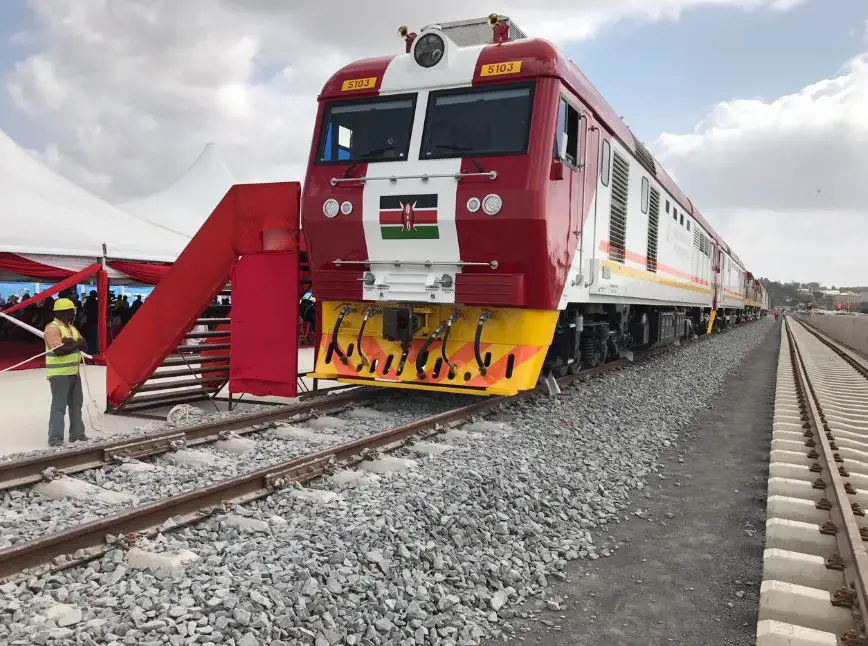

Good show to this point.
I suggest those in charge of a more rapid development course, investigate the economic path the American President, Franklin Roosevelt, took to produce, in 3 years, the material necessary to supply all the allies to win the WW2. Tying the young in the CCC program that taught them the work ethnic to go into the industries, the building of railways, requiring their participation, and even with in Africa no massive industrial process, Africa could request that America step up it’s steel, and other required industries to supply the material Africa needs – the industries in America would Be delighted!
But the concepts behind the Rosevelt economics based on physical necessities are the key.
My name is Njeru murithi Nicholas, mechanical engineering(construction plant option) diploma holder, i really feel attached to your company, i kindly request you to find a room for interniship